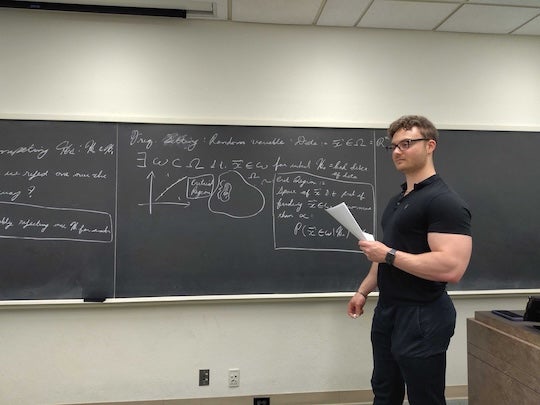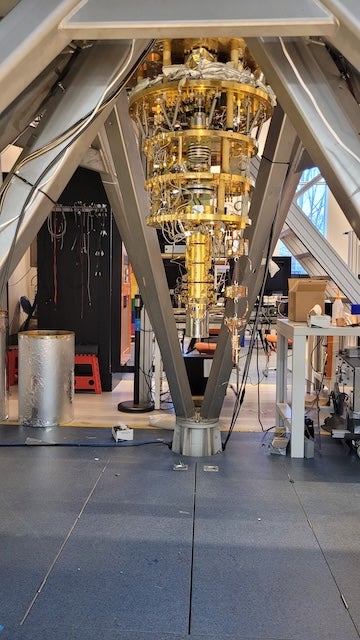Dark matter, although not visible, is believed to make up most of the total mass of the universe. One theory suggests that ultralight dark matter behaves like a continuous wave, which could exert rhythmic forces that are detectable only with ultra-sensitive quantum instrumentation.

New research published in the American Physical Society journal June 24 and led by Rice University physicist Christopher Tunnell and postdoctoral researcher Dorian Amaral, the study’s first author and lead analyst, sees the first direct search for ultralight dark matter using a magnetically levitated particle. In collaboration with physicists from Leiden University, the team suspended a microscopic neodymium magnet inside a superconducting enclosure cooled to near absolute zero. The setup was designed to detect subtle oscillations believed to be caused by dark matter waves moving through Earth.
“Our approach brings dark matter detection into a new realm,” Tunnell said. “By suspending a tiny magnet in a frictionless environment, we’re giving it the freedom to move if something nudges it.”
A new window into dark matter
The researchers monitored the levitated magnet with incredible precision, employing sensors capable of detecting movements smaller than the width of a hydrogen atom. Despite this sensitivity, they did not find evidence of the anticipated signal. However, this null result allowed physicists to rule out a specific interaction between dark matter and ordinary matter.
They focused on detecting forces arising from dark matter interactions that differ based on baryon and lepton numbers, or conserved quantum numbers in particle physics that remain constant in particle interactions, within a theoretical model known as B−L. Their search targeted a narrow frequency band around 26.7 Hz, establishing new limits on the strength of these interactions and a new technology for dark matter.

“Every time we don’t find dark matter, we refine the map,” Tunnell said. “It is like searching for a lost key in your house — when you do not find it in one place, you know to look elsewhere.”
Path to Polonaise
Building on these findings, the research team proposed a next-generation experiment called Polonaise, aimed at enhancing sensitivity and expanding the search for dark matter. The name is a reference to the dance the physics professors performed when they met at a climate protest and realized this measurement was possible. This new setup will incorporate heavier magnets, more stable levitation and broader frequency coverage.

The experiment is designed to probe areas of the theoretical landscape that current detectors have not explored, seeking to identify ultra-weak forces in the most undisturbed environments possible.
“Our future setup won’t just listen more closely, it’ll be tuned to hear things we’ve never even tried listening for,” Tunnell said.
Amaral, who last year worked with Mustafa Amin, associate professor of physics and astronomy, to develop the theoretical underpinnings of this measurement, highlighted the broader implications of this experimental work that is now possible.
“We’re not just testing a theory, we’re laying the groundwork for an entire class of measurements,” Amaral said. “Magnetic levitation gives us a fundamentally new tool to ask the universe big questions.”
By achieving force sensitivity comparable to the weight of a single virus, the levitation platform opens new avenues for detecting weak, long-range forces. The research team included collaborators Dennis Uitenbroek and Tjerk Oosterkamp from Leiden University and was supported by the National Science Foundation.

